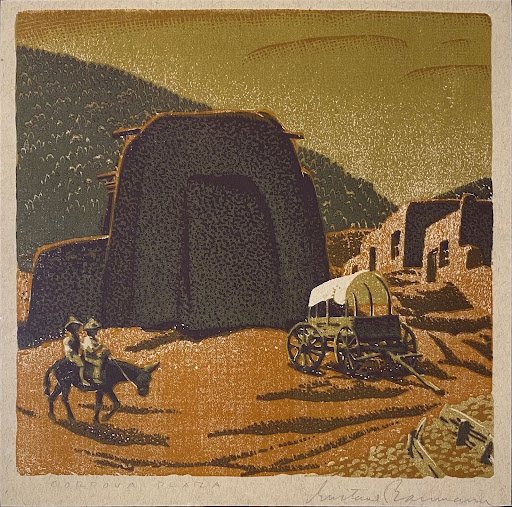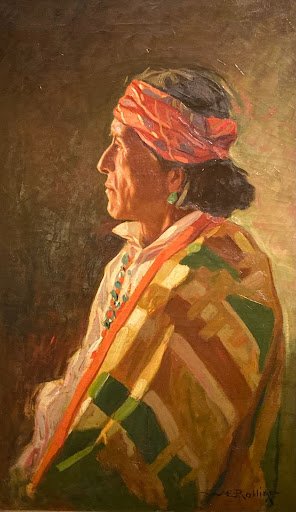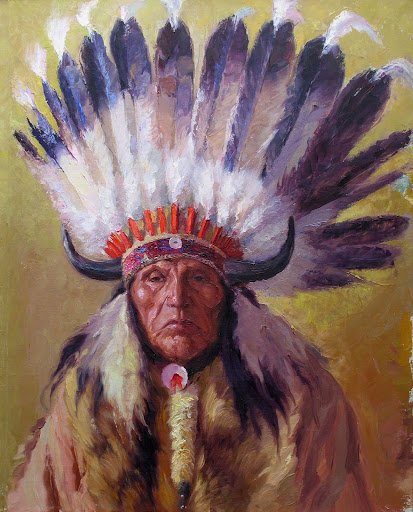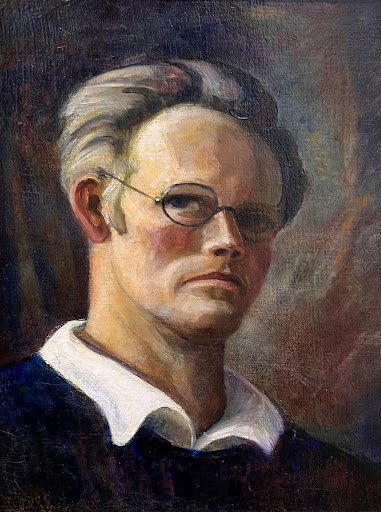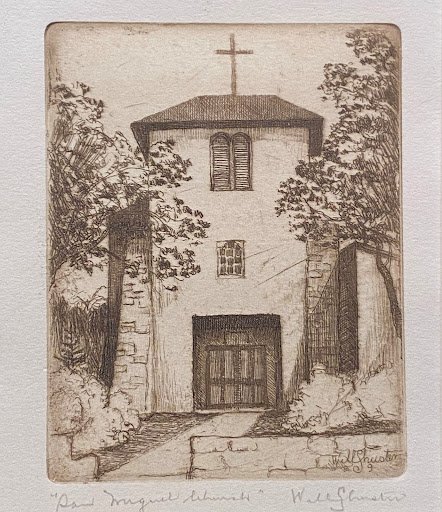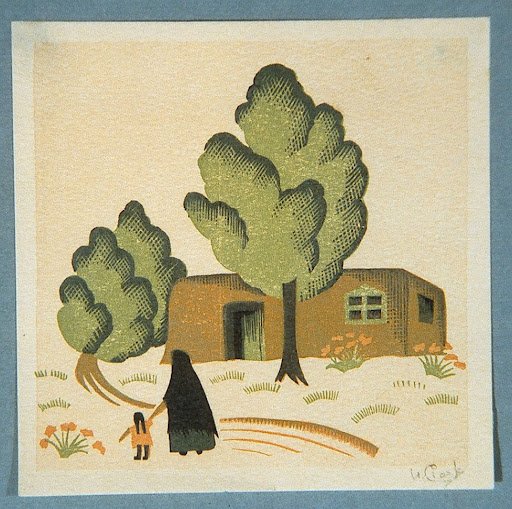How Santa Fe Became An Art Mecca
/The city of Santa Fe is synonymous with art and culture. In fact, it was the first city in the United States dubbed a “Creative City” by UNESCO and is the third largest art market in the country.
But this 400-year-old city wasn’t always famous for art. It’s a reputation that’s only been building for the last century. So why Santa Fe?
Gustave Baumann - “Cordova Plaza” ed. of 200, color wood block, 7 ¾ x 7 ¾”
For hundreds of years, Native artists resided in the Pueblos around Santa Fe developing their own art forms, and after the Gadsden Purchase made the Southwest a US territory, classically-trained artists frequented the region on short visits. Yet in the early 1900s, “Anglo” artists like Carlos Vierra, Warren Rollins, Gerald Cassidy, Sheldon Parsons and others began settling in Santa Fe more permanently.
The light and landscape, better cost of living, colorful and unfamiliar cultures, and dry climate that eased common illnesses were among the top draws. Coincidentally, this was occurring at the same time local Natives and townspeople realized the opportunity for tourism and promoting their own art, architecture and traditions.
Warren Rollins - “Native Portrait” (Untitled) Oil on canvas, 30 x 18”
Henry C. Balink - “Sioux Chief - 1930s Pine Ridge”, oil/linen, 30 x 25”
Much of the groundwork was laid early on by an ambitious archaeologist and member of the Santa Fe City Planning Board, Edgar Lee Hewett. Not only was he instrumental in defining and promoting the “New-Old Santa Fe Style” of architecture, he also spearheaded the founding of the New Mexico Museum of Fine Art in 1917.
Eventually a number of big names moved to Santa Fe, including Gustave Baumann, Robert Henri, John Sloan, Randall Davey, Frank Applegate, B.J.O Nordfeldt, Henry Balink, Andrew Dasburg and others.
Gustave Baumann - “Rio Pecos” #AP/100, 1920, Color wood block, 9 ½ x 11 ¼”
B.J.O. Nordfeldt - “Untitled” (Still Life), oil on canvas, 26 x 38”
By the early 1920s, dedicated social clubs and associations began to form, which led to the founding of the preeminent artist group in Santa Fe– Los Cinco Pintores. These five artists, mostly young and self-taught, sought to develop their skills and forge a reputation together.
It started with Fremont Ellis, the young optometrist and painter from El Paso, and grew to include Will Shuster, Josef Bakos, Walter Mruk and Willard Nash. They quickly found a mentor to help grow their talents: accomplished artist, Albert Herman Schmidt.
Will Shuster - “Self Portrait”, oil on board, 16 x 12”
Young artists also found assistance from the new art museum, which helped with framing, building shipping crates and photographing their works for marketing. The annual exhibitions held at the museum, juried and open to all artists, led to invaluable exposure and patronage.
Fremont Ellis - “Aspens By A Mountain Pond”, oil on canvas, 24 x 30”
Soon the art world flourished in Santa Fe and Northern New Mexico. Gallerists, curators and patrons flocked to the state to fill their museums and private collections with this desirable new school of American art.
Will Shuster - “San Miguel Church”, etching, 4 x 3”
Willard Clark - “Woman With Child, House & Tree”, wood block print (first printing), 4 ⅞ x 4 ⅞”
The promotional strategy of groups like Los Cinco Pintores was a major success. Their personal reputations grew and many of them became legendary in the area, such as Will Shuster, the eccentric and beloved founder of Zozobra.
Though the group only stayed intact from 1921-1926, their impact on the city would last. They and the artists from the early Santa Fe art colony influenced generations of painters, sculptors and potters. Thus turning Santa Fe into not only a muse, but a mainstay of the global art market.
Fremont Ellis - “Forest Gulch In Spring”, oil on canvas, 25 x 30”
All works in this article are currently available at Nedra Matteucci Galleries in Santa Fe. For questions or inquiries, please email inquiry@matteucci.com or call us at (505) 982-4631.
Sources: https://www.canyonroadarts.com/founding-the-santa-fe-art-colony/
